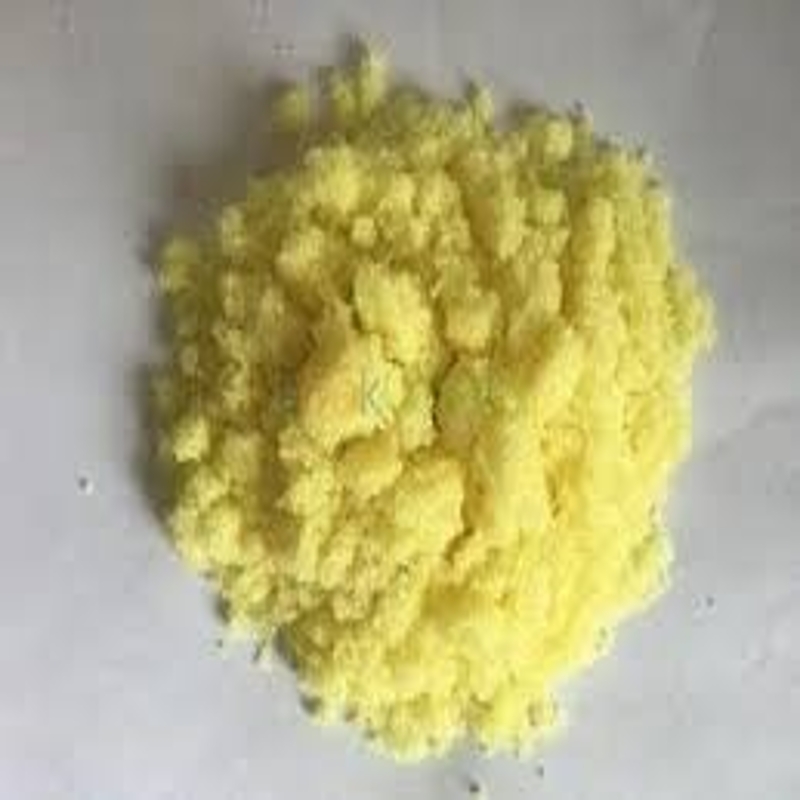How to use new compound molecules to help treat multiple diseases?
-
Last Update: 2018-09-18
-
Source: Internet
-
Author: User
Search more information of high quality chemicals, good prices and reliable suppliers, visit
www.echemi.com
In this paper, a number of research results have been compiled to jointly interpret how scientists use compound molecules to treat a variety of human diseases and improve human health! Share with you! 【1】 SCI signaling: natural plant compounds can be used to treat fatal cancer doi: 10.1126/scignal.aao6852 according to a research result of researchers from St Louis School of medicine, Washington University, a class of natural plant compounds can effectively kill uveal melanoma cells at the laboratory level, and can shut down the driving uveal melanoma cells An overactive signal of cell growth The study was recently published in the journal Science signaling Uveal or ocular melanomas originate in the pigment cell layer of the eye, including the iris About half of cancer patients are at risk of life These cancers account for about 3% to 5% of all melanoma cases Unlike skin melanomas, uveal melanomas are not closely linked to ultraviolet radiation, but researchers point out that people with blue eyes and fair skin are at the highest risk of the disease "In about half of the patients, this tumor is metastatic," said Kendall J Blumer, Ph.D., Professor of cell biology and physiology, the study's author "Skin melanoma now has many relatively new targeted therapies, including immunotherapy, that can extend survival even after the tumor has spread Unfortunately, these treatments seem to have little effect on uveal melanoma So we need to develop new therapies for this particular type of tumor " 【2】 J innate immune: natural lipid molecule or powerful anti-inflammatory function doi: 10.1159/000489504 recently, an International Journal of innate In the Research Report on immunology, scientists from the National Institute of allergy and infectious diseases in the United States identified a naturally occurring fat, namely waxy fatty acid, which can be used by pathogenic bacteria to damage the immune response of the host body and increase the probability of host infection Relevant research may help researchers develop bacterial resistance And potential anti-inflammatory therapy for viral infection Researchers all know that when infected with mice and human cells, lipid molecules can help t.tularensis inhibit the inflammatory response of the host, and t.tularensis can induce hare disease In this study, researchers found a special lipid form called phosphatidylethanolamine (PE) in bacterial cells, and PE composition in t.tularensis is different from other bacteria In cell culture experiments, researchers found that natural and synthetic PE can reduce the body inflammation induced by Francisella tularensis and dengue virus 【3】 Polymers: scientists hope to use natural plant extracts such as tea tree oil to resist bacterial infection doi: 10.3390/polym10050515 recently, a research report published in the international journal polymers, from James Cook University Scientists at university have developed a new technology that can use natural plant extracts, such as tea tree oil, as coatings for medical devices, and this process can effectively inhibit millions of infections every year In the United States alone, about 17 million new biofilm related bacterial infections occur every year, which will cause about 550000 deaths About 80% of surgical related infections in the world are related to bacterial biofilm In this study, we were able to convert plant-based products (PSMS, secondary metabolites) into polymer packages on the surface of medical devices, including some implants, said researcher Mohan Jacob PSMS are derived from essential oils and herbal extracts, which have relatively strong broad-spectrum antibacterial activity Moreover, they are commercial renewable resources with limited toxicity Compared with synthetic antibiotics, PSMS also have different molecular mechanisms of resistance to bacterial infection This research can help to solve some persistent problems, that is, how to transform the plant extracts from liquid state into solid state to be used as the coating of medical devices, without significantly reducing its effect 【4】 JBC: the new system is expected to help screen out a variety of therapeutic compounds that can resist cancer Doi: 10.1074/jbc.ra118.004274 recently, an International Journal of biological In the Research Report on chemistry, scientists from the National Center for advancement and transformation Sciences in the United States have developed a new system, or can help speed up the search for special compounds that inhibit enzymes that induce a series of cancers At present, researchers have screened more than 1600 compounds by using this technology According to the researchers, an enzyme named nsd2 is overexpressed in many cancers, such as acute lymphoblastic leukemia And specific types of multiple myeloma, so inhibiting the activity of nsd2 seems to be able to help the development of new therapies for the above-mentioned cancer, but up to now, researchers have not found any compounds that can reliably block the function of nsd2 in the laboratory environment, let alone in vivo animal models Researchers Matthew Hall said that at present, we lack many chemical probes (molecules like drugs) available to help study the function of nsd2; part of the reason why it is difficult to find chemical inhibitors of nsd2 is that the enzymes are difficult to play a role in the laboratory, and nsd2 can repair the histone entangled in DNA For some technical reasons, researchers began to use some segments of the enzymes and histones to study their activities, but NSDs only affect the whole nucleosome, that is, the unit that histones combine with DNA 【5】 Aging: new compounds can reverse the trend of cell aging doi: 10.18632/aging.101500 a recent study by researchers from Exeter University found that drug treatment can reverse the trend of human cell aging In this study, the authors used drugs targeting mitochondria to stimulate endothelial cells cultured in the laboratory environment The results showed that drug treatment could reduce the aging degree by 50% In addition, the authors also found that two kinds of cytokine have important effects on the aging process of endothelial cells This study provides more possibilities for the treatment of aging cells in the future As we all know, vascular endothelial cells become harder with age, which increases the risk of heart disease and stroke 【6】 Cell: significant progress has been made in the treatment of spinal cord injury! Using small molecular compounds to reactivate the spinal circuit doi: 10.1016/j.cell.2018.06.005 most patients with spinal cord injury are paralyzed from below the injury site, even if the spinal cord is not completely cut off Why can't the intact part of the spinal cord continue to function? Now, in a new study, researchers from Nantong University in China, Boston Children's Hospital and Brigham women's Hospital in the United States have provided a new understanding of why the neural circuit in the spinal cord (i.e spinal circuit) remains inhibited They also confirmed that when administered throughout the body, a small molecule compound can activate these neural circuits in paralyzed mice, restoring their ability to walk The results were published online in the journal Cell on July 19, 2018 Many animal studies trying to repair spinal cord injury focus on regenerating nerve fibers or axons, or sprouting new axons from healthy axons Although he's laboratory and others have achieved impressive axonal regeneration and sprouting before, the impact on animal motor function is still not so clear after suffering from severe spinal cord injury Some studies have tried to use neuromodulators such as serotonin drugs to stimulate neural circuits in the spinal cord, but this only leads to short-term uncontrolled limb movements In this new study, the researchers took another approach, inspired by the success of the strategy based on epidural electrical stimulation, which is also the only effective treatment for patients with spinal cord injury In this treatment, an electric current is applied to the lower part of the spinal cord, which, combined with rehabilitation training, allows some patients to return to exercise 【7】 Nature: scientists have successfully developed a special small molecular compound doi: 10.1038/s41586-018-0287-8 for the effective treatment of spontaneous inflammatory diseases Recently, in a research report published in the international journal Nature, researchers from the Federal Institute of technology in Lausanne, Switzerland (EPFL) found that two small molecular compounds It can effectively block the central pathway of innate immune system, and provide new ideas and hopes for the treatment of spontaneous inflammatory diseases Innate immune system is the first line of defense against foreign pathogens Immune cells can quickly recognize foreign viruses or bacteria As a key strategy to detect the presence of pathogens, immune cells in innate immune system can use special receptors to identify the DNA of microorganisms, and then activate the expression of sting protein, which is interferon gene stimulator Genes), once activated, sting will turn on gene expression to help cells resist the invasion of infectious pathogens However, the innate immune system will also target the body itself and induce a series of diseases, such as the so-called spontaneous inflammatory diseases Although researchers have conducted in-depth research on the molecules involved in the function of the innate immune system, the development of drugs targeting specific molecules still faces great challenges for them In this study, the researchers developed a special new compound, which can specifically bind sting and effectively block its activity The researchers used a screening test to find special molecules that can inhibit the activation of cells receiving sting Then they screened two independent compound series, which can block the function of sting in human and mouse cells Yes 【8】 Science: using bacteria to make carbon ring compounds with super energy doi: 10.1126/science.aar4239 in a new study, researchers from Caltech developed a bacterial strain that can make small but energy intensive carbon rings, which are useful starting materials for making other chemicals and materials These carbon rings, which are particularly difficult to prepare, can now be "brewed" like beer Relevant research results were published in the journal Science on March 6, 2018 The bacterium was developed by researchers from the Frances Arnold laboratory, a professor of chemical engineering, bioengineering and biochemistry at Caltech, using the directed evolution technology developed by Arnold in the 1990s This directed evolution technology allows scientists to quickly and easily grow bacteria with the properties they need Arnold's lab has used it to cultivate bacteria that produce carbon silicon and carbon boron bonds, both of which have not been found in natural organisms Using this same technology, these researchers set out to build this
This article is an English version of an article which is originally in the Chinese language on echemi.com and is provided for information purposes only.
This website makes no representation or warranty of any kind, either expressed or implied, as to the accuracy, completeness ownership or reliability of
the article or any translations thereof. If you have any concerns or complaints relating to the article, please send an email, providing a detailed
description of the concern or complaint, to
service@echemi.com. A staff member will contact you within 5 working days. Once verified, infringing content
will be removed immediately.







